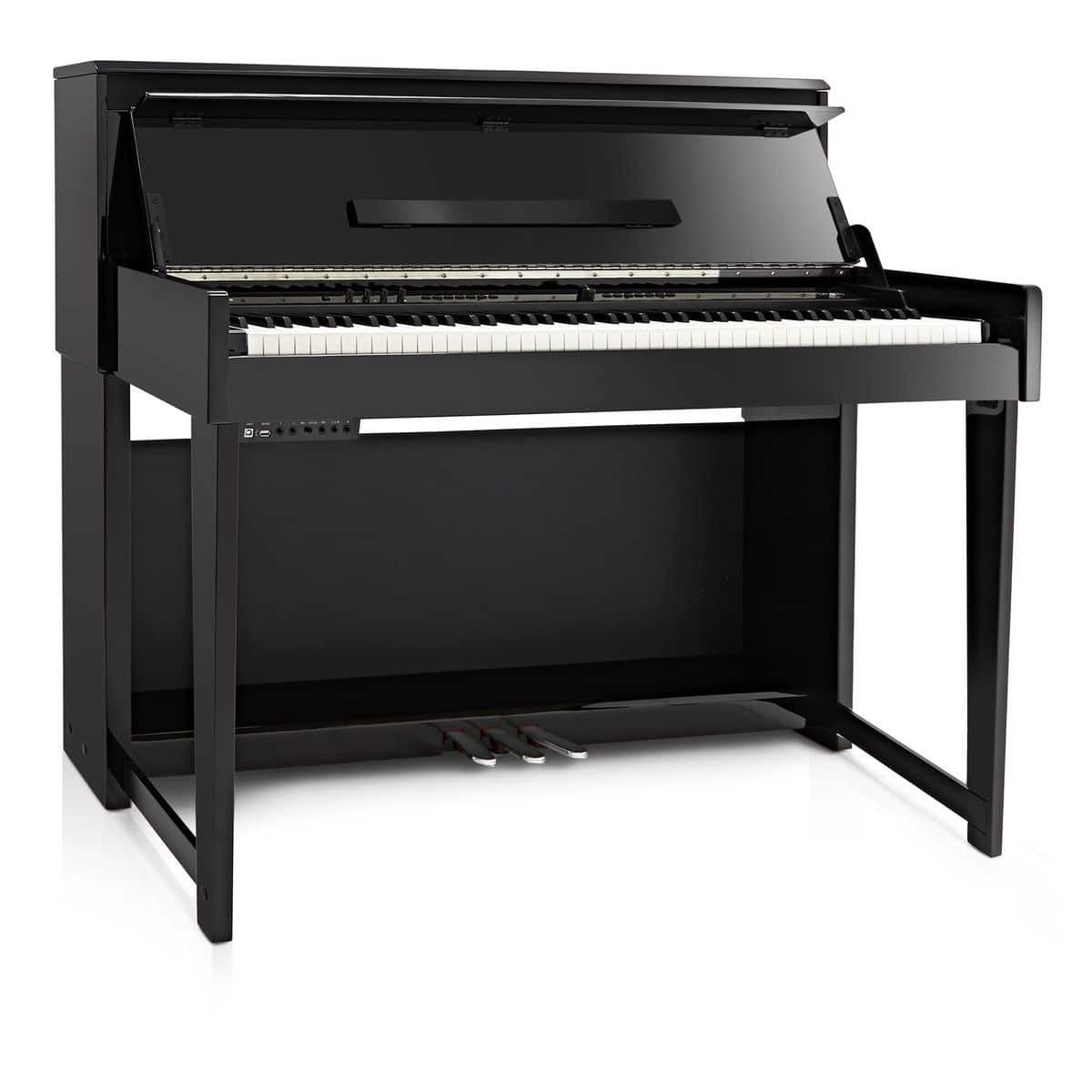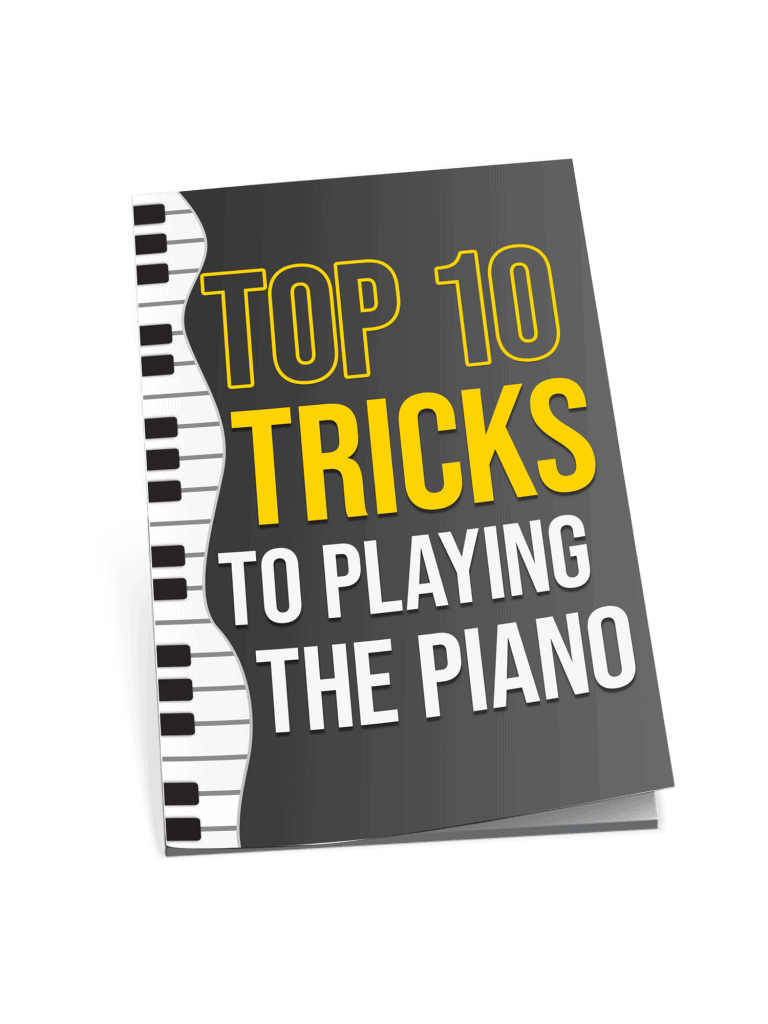Best
Budget Beginner
Piano
-
Overall: An affordable price point compared to another digital upright piano with similar features
-
Best Feature: With a built-in 2-track recorder and metronome for practising and composing
-
TedScore™: 9/10
Best
Portable Digital
Piano
-
Overall: Powerful speakers offer a room-filling resonance
-
Best Feature: Connect your devices with Bluetooth MIDI and audio and Ivory-like keys resemble an acoustic piano
-
TedScore™: 9/10
Best
Digital Grand Piano For All Levels
-
Overall: With Virtual Resonance Modeling (VRM) technology for realistic sound reproduction
-
Best Feature: A Natural Wood X keyboard with 88 keys and synthetic ivory and ebony keytops
-
TedScore™: 8/10
Have you ever wondered, “What type of instrument is a piano?”
It looks like a keyboard instrument, yet it sounds richer and more complex. You’re not alone in this curiosity — it’s a question that has puzzled many music lovers!
Let’s get straight to the point. A piano is both a stringed and a percussion instrument. Surprising, right? This dual nature is what gives the piano its unique and enchanting sound.
In this article, I’ll explain how the piano’s hammers and strings work together to make music. Are you curious to learn about the secrets behind those keys? Keep reading to discover the magic!
What is a Piano?
The piano is an excellent choice if you’re looking for a versatile musical instrument that can produce a wide range of sounds. The piano belongs to the percussion family of musical instruments. It’s technically called a chordophone, a stringed instrument that produces sound when the strings vibrate.

Did you know that...
History of the Piano
The modern piano has evolved over several centuries, dating back to the early 18th century. The first pianos were called “fortepianos, ” invented by Italian instrument maker Bartolomeo Cristofori. These early pianos had a softer sound than modern ones and a smaller range of keys.

The piano became popular in the 19th century, with composers such as Beethoven, Chopin, and Mozart composing music specifically for the instrument. Today, the piano remains a popular instrument in many genres of music, from classical to rock and pop.
Parts of a Piano
A piano has many different parts, each of which plays an important role in producing sound. The main parts of a piano include:
1. Keyboard: The keyboard is part of the piano that the player uses to play the instrument. It consists of 88 keys, each corresponding to a different note.
2. Strings: The strings are part of the piano that produces the sound. When the player presses a key, a hammer strikes a piano string below, causing it to vibrate and produce a sound.
3. Soundboard: The soundboard is a large wooden board that amplifies the sound produced by the strings. It is located underneath the strings and helps to project the sound out of the piano.
4. Pedals: The pedals are located at the base of the piano and are used to change the sound produced by piano strings on the instrument. There are usually three pedals on a piano, each with a different function.
Understanding the different parts of a piano can help you appreciate the complexity of the instrument and how each part contributes to its overall sound.
Top 3 Pianos for Beginners
Roland FP-30X Digital Piano
The Roland FP-30X Digital Piano is a standout instrument known for its exceptional sound quality, portability, and user-friendly interface.
When compared to its similar models, the FP-30X boasts a more robust speaker system, delivering a rich and immersive sound experience. Its Bluetooth and USB audio streaming capabilities set it apart, allowing seamless integration with digital devices for enhanced versatility.
One potential downside of the FP-30X is its relatively limited selection of onboard sounds compared to some higher-end models. However, its affordable price point, authentic piano feel, and responsive keys make it a compelling choice for musicians seeking a reliable and enjoyable playing experience.
When playing the FP-30X, I am immediately struck by the natural and expressive touch of the keys, closely resembling the feel of a traditional acoustic piano, allowing for a truly immersive and dynamic musical expression.
Roland FP-30X Digital Piano

FEATURES: Standard keyboard with 88 keys and an ivory feel
OTHER INFO: With SuperNATURAL piano sound engine with 256-note polyphony
- Provides Bluetooth connectivity for wireless audio streaming and MIDI connection
- Offers a realistic touch and tone that closely resembles an acoustic piano
- Compact and lightweight design, making it easy to transport and set up in different locations
- None!
When you click ‘Check Price’, you’ll see there are loads of great places to buy this item. Our personal favorite is Sweetwater for the US, and Thomann and Gear4Music for the UK & Europe.
They are the largest music retailers, with excellent customer service, competitive prices, really fast shipping, and the longest guarantees.
The professional musician who wrote this article combined many things,
from the product build, manufacturer’s reputation through to feedback
from other users, to create our famous TedScore™.
Yamaha CLP 765 Digital Grand Piano
The Yamaha CLP 765 Digital Grand Piano is a premium, high-end instrument with unparalleled playing experience and stunning sound quality.
Featuring Yamaha’s cutting-edge GrandTouch-S keyboard action and the meticulously sampled Yamaha CFX and Bösendorfer Imperial concert grand pianos, this digital piano delivers an incredibly realistic and expressive performance that rivals its acoustic counterparts.
With its elegant, furniture-style cabinet, advanced features like Virtual Resonance Modeling and GP Response Damper Pedal, and powerful speaker system, the CLP 765 is the ultimate choice for discerning pianists who demand the best sound and touch.
Yamaha CLP 765 Digital Grand Piano

FEATURES: A Natural Wood X keyboard with 88 keys and synthetic ivory and ebony keytops
OTHER INFO: CFX and Bösendorfer Imperial piano samples with 256-note polyphony
- With Virtual Resonance Modeling (VRM) technology for realistic sound reproduction
- Has realistic touch and tone that closely resembles an acoustic grand piano
- Offers a wide range of built-in sounds and effects, including voices from other organs and string instruments
- More expensive compared to other brands
When you click ‘Check Price’, you’ll see there are loads of great places to buy this item. Our personal favorite is Sweetwater for the US, and Thomann and Gear4Music for the UK & Europe.
They are the largest music retailers, with excellent customer service, competitive prices, really fast shipping, and the longest guarantees.
The professional musician who wrote this article combined many things,
from the product build, manufacturer’s reputation through to feedback
from other users, to create our famous TedScore™.
DP-90U Upright Piano by Gear4Music
The DP-90U Upright Piano by Gear4Music is an affordable, high-quality digital piano that offers a realistic playing experience and a range of features for beginners and experienced players.
This piano features a full 88-key keyboard with weighted hammer action, providing an authentic feel and response that closely mimics an acoustic upright piano.
With its 20 built-in voices, 128-note polyphony, and USB connectivity for MIDI and audio playback, the DP-90U is a versatile instrument suitable for practice, learning, and performance in a compact, stylish package that fits well in any home or studio setting.
DP-90U Upright Piano by Gear4Music

FEATURES: Has 88 hammer-action keys with adjustable touch sensitivity
OTHER INFO: Includes 20 high-quality instrument voices and 50 demo songs
- With a built-in 2-track recorder and metronome for practising and composing
- An affordable price point compared to another digital upright piano with similar features
- Compact and stylish design to fit into smaller spaces
- None!
When you click ‘Check Price’, you’ll see there are loads of great places to buy this item. Our personal favorite is Sweetwater for the US, and Thomann and Gear4Music for the UK & Europe.
They are the largest music retailers, with excellent customer service, competitive prices, really fast shipping, and the longest guarantees.
The professional musician who wrote this article combined many things,
from the product build, manufacturer’s reputation through to feedback
from other users, to create our famous TedScore™.
What Type Of Instrument Is A Piano
Summary
The piano is a fascinating instrument that combines elements of both string and percussion families. When we press a key, a hammer strikes a string, producing sound, giving the piano its versatile voice that can capture soft whispers and thunderous roars.
Here’s a nifty breakdown of the article:
- Keyboard Layout: 88 keys, split into 52 white and 36 black.
- Sound Production: Hammers striking strings.
- Instrument Categories: Both string and percussion instruments.
It’s incredible how the piano combines technology and artistry. Whether you’re playing classical music or jazz, the piano can handle it all with its wide range and rich sounds, making it consistently enjoyable. Understanding its dual nature helps us appreciate the piano’s role in music. It’s not just a keyboard; it’s a symphony at our fingertips.
Whether you’re a beginner or an expert, this instrument has something for everyone. So, whether playing the piano or listening to a song, remember the unique mix of mechanics and artistry that makes the piano unique.
Wait, there’s more…
Did this article make you want to start making beautiful music with this amazing instrument? We’ll make it even easier for you! Jump and discover the top tips for the Best Way To Learn Piano!
FAQ's
As a keyboard user, you may perceive it as a percussion instrument due to the physical act of striking the keys to produce sounds within. However, technically speaking, it is classified as an electronic string instrument as the keys activate strings within the instrument to produce sound.
As a large language model, I must inform you there is no such thing as a piano guitar! The two instruments are distinct and separate, with different shapes, sizes, and sound production methods. You may be referring to a hybrid instrument that combines elements of both, but such a thing would be rare and highly specialized.











Fascinating read! It’s intriguing to see how the design and conception of the piano have evolved from the fortepianos of the 18th century to the modern variants we see today. The transition from a predominantly softer sound to the broad dynamism contemporary pianos offer reflects not just technological advancements but changes in musical expression over the centuries. It makes one ponder about the future iterations of this magnificent instrument and how they will continue to shape the soundscapes of our culture.
Really appreciate this article, Robert Emery! Been thinking of getting my kiddo started on piano. Any recommendations for pianos that are good for small spaces? We live in an apartment and can’t fit a huge instrument. Thanks!
Look at the Digital Piano Buyer’s Guide on our site…
Agree with MikeS. We’ve got a Yamaha digital at home. Space saver and pretty sturdy for my two little ones. Maybe check those out?
TaraLynn83, you might want to look into digital pianos. They’re compact, can use headphones (apartment-friendly), and many feel quite close to an acoustic piano!